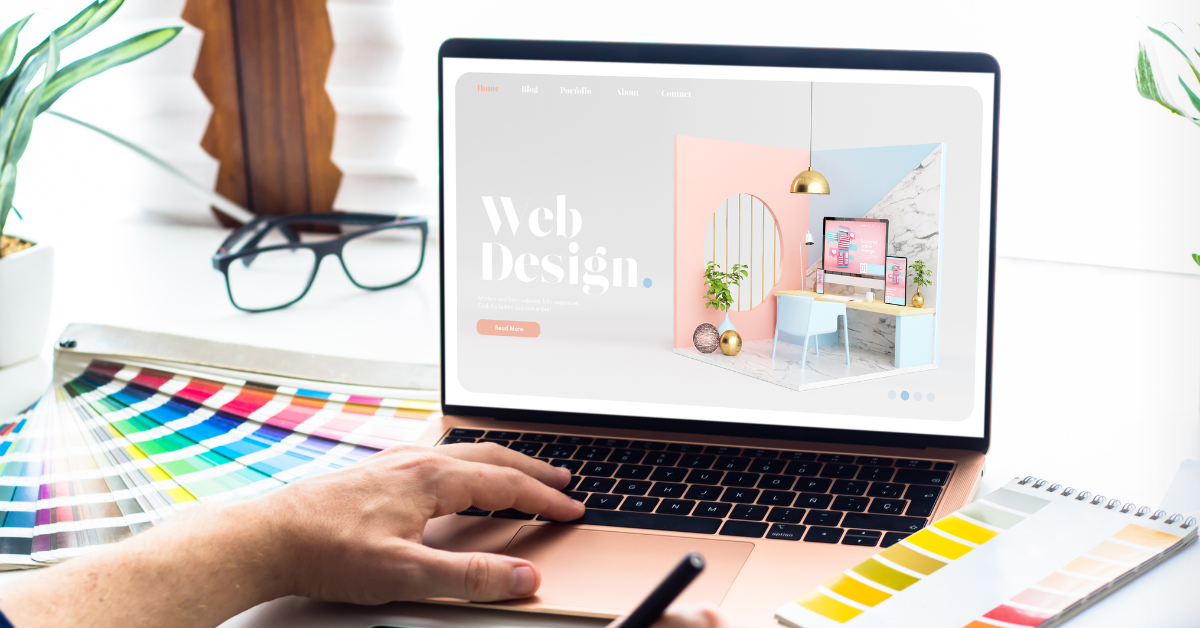Building a Career as a Web Designer: Tips for Growth and Success

The field of web design offers exciting opportunities for creativity, problem-solving, and technical expertise. As more businesses and individuals move their operations online, the demand for skilled web designers continues to grow. If you’re looking to build a successful career as a web designer, you need to stay ahead of industry trends, hone your technical skills, and consistently deliver high-quality work.
In this article, we’ll explore practical tips and strategies to help you grow your career as a web designer and achieve long-term success in the industry.
1. Master Essential Web Design Skills
To build a successful career, mastering the core skills required in web design is essential. These include:
Design Principles
A solid understanding of design fundamentals is crucial. This includes principles such as:
- Typography: Knowing how to choose and pair fonts effectively for readability and style.
- Color Theory: Understanding how colors interact and their emotional impact on users.
- Layout: Creating aesthetically balanced designs that enhance user experience.
- White Space: Using empty space effectively to make content stand out and improve readability.
Technical Skills
In addition to design knowledge, web designers must be proficient in several technical skills:
- HTML/CSS: These are the building blocks of any website. Mastering HTML for structure and CSS for styling is fundamental for any web designer.
- JavaScript: Having a working knowledge of JavaScript allows you to add interactivity to web pages and enhance user experience.
- Responsive Design: As mobile usage grows, designing websites that adapt to various screen sizes is essential. Learn about mobile-first design principles and CSS frameworks like Bootstrap.
- UI/UX Design: Understanding user interface (UI) and user experience (UX) principles ensures that your designs are both visually appealing and user-friendly.
Tools and Software
To execute your design work efficiently, you should be familiar with key design tools such as:
- Adobe Creative Suite (Photoshop, Illustrator, XD): These tools are essential for creating and editing design elements.
- Figma and Sketch: Collaborative design tools that allow for efficient design prototyping and collaboration with teams.
- WordPress: A popular content management system that many designers work with to create websites.
- Web Development Tools: Familiarize yourself with code editors like Sublime Text, Visual Studio Code, or Atom.
2. Stay Current with Industry Trends
Web design is a constantly evolving field. To stay relevant and continue to improve your skills, it’s important to keep up with the latest trends and technologies. This includes:
- Web Design Trends: Pay attention to evolving design styles, such as dark mode, minimalism, and dynamic scrolling. These trends can help you stay creative and offer modern solutions to clients.
- New Technologies: Explore emerging technologies like AI, augmented reality (AR), and virtual reality (VR) to offer cutting-edge design solutions.
- Design Frameworks: Familiarize yourself with the latest frameworks like Tailwind CSS, which helps streamline the design process and create responsive websites faster.
- Best Practices for Accessibility: Accessibility is increasingly becoming a priority for websites. Stay updated on best practices for making websites accessible to users with disabilities, ensuring inclusivity.
3. Build a Strong Portfolio
A strong portfolio is one of the most important tools for a web designer. It showcases your skills, creativity, and the results of your work. To build an impressive portfolio:
- Include Real-World Projects: Work on live projects or volunteer for organizations to gain experience. Personal projects or mock-up websites can also be valuable additions.
- Highlight Your Process: Clients and employers are not only interested in your final designs, but also in your problem-solving and design thinking process. Include case studies in your portfolio that outline how you approach a project, from research to final delivery.
- Showcase a Variety of Work: Display a mix of web designs, including responsive designs, UI/UX projects, and e-commerce sites, to demonstrate your versatility.
- Create an Online Portfolio: A professional website to showcase your work is crucial. Make sure your portfolio is easy to navigate, visually appealing, and reflects your design skills.
4. Network with Other Professionals
Networking is vital for career growth in any field, and web design is no exception. Here’s how you can expand your professional network:
- Join Online Communities: Participate in web design communities and forums (such as Dribbble, Behance, or Reddit’s design subreddits). These platforms provide opportunities to share your work, get feedback, and connect with other designers.
- Attend Web Design Events: Conferences, workshops, and meetups are great opportunities to learn from industry experts and connect with potential collaborators, clients, or employers.
- Follow Industry Leaders: Follow thought leaders in web design on social media platforms like Twitter or LinkedIn to stay informed about trends, discussions, and job opportunities.
- Collaborate with Other Designers: Partnering with other designers or developers can lead to valuable learning experiences and expand your skill set.
5. Freelance or Work for an Agency?
As a web designer, you have the option to work as a freelancer or as part of a design agency. Each path has its own benefits and challenges:
- Freelancing: Offers flexibility, independence, and the ability to set your own rates. However, it also requires you to manage your own clients, marketing, and business operations.
- Agency Work: Provides steady employment, the chance to work on a variety of projects, and collaboration with other designers and developers. However, you may have less creative control and a more structured environment.
Both paths offer opportunities for career growth, and many web designers switch between the two at various points in their careers. Consider your personal preferences, work style, and goals when deciding which path to take.
6. Develop a Strong Personal Brand
Building a personal brand as a web designer can help you stand out in a competitive market. Here are some strategies to develop your brand:
- Create a Signature Style: Over time, develop a distinctive design style that sets you apart. This could be a unique color palette, typography choice, or the way you approach problem-solving.
- Share Your Knowledge: Write blog posts, create tutorials, or host webinars to showcase your expertise. Sharing your knowledge helps establish credibility and attracts potential clients or employers.
- Be Active on Social Media: Platforms like Instagram, Twitter, and LinkedIn are great ways to share your work, engage with others in the design community, and expand your reach.
- Ask for Testimonials: Client testimonials and case studies are powerful tools for building trust with potential clients. Request feedback from your clients and use it to strengthen your portfolio.
7. Seek Out Feedback and Learn Continuously
The best way to improve as a web designer is to embrace feedback and commit to lifelong learning. Regularly seek feedback from peers, clients, and mentors to understand where you can improve. Additionally, pursue continuous learning to stay ahead in the industry:
- Take Online Courses: Platforms like Udemy, Coursera, or Skillshare offer courses on advanced design techniques, new technologies, and the latest trends.
- Read Industry Blogs and Books: Stay up to date with design blogs, books, and podcasts to deepen your understanding of the field.
- Experiment with New Tools and Techniques: Don’t be afraid to try out new tools, frameworks, and techniques. Experimenting will help you expand your skill set and stay creative.
8. Build a Client Base and Get Paid What You’re Worth
As a web designer, learning how to price your services appropriately is crucial for sustaining a profitable career. Start by:
- Setting Clear Rates: Research industry standards for web design rates in your area and adjust based on your experience level and the complexity of the project.
- Build Client Relationships: Cultivate long-term relationships with clients by delivering high-quality work and maintaining good communication. Repeat clients are a great source of steady income.
- Offer Value-Added Services: Provide additional services such as website maintenance, SEO optimization, or content management to increase your earning potential.
Conclusion
Building a successful career as a web designer requires a combination of technical expertise, creativity, and a strong professional network. By mastering essential skills, staying updated with industry trends, building an impressive portfolio, and continuously seeking feedback, you can grow your career and achieve long-term success. Whether you choose to freelance or work for an agency, the opportunities in web design are vast and ever-growing.
With dedication and a commitment to learning, you can position yourself as a sought-after web designer and create a rewarding, fulfilling career in the digital world.






